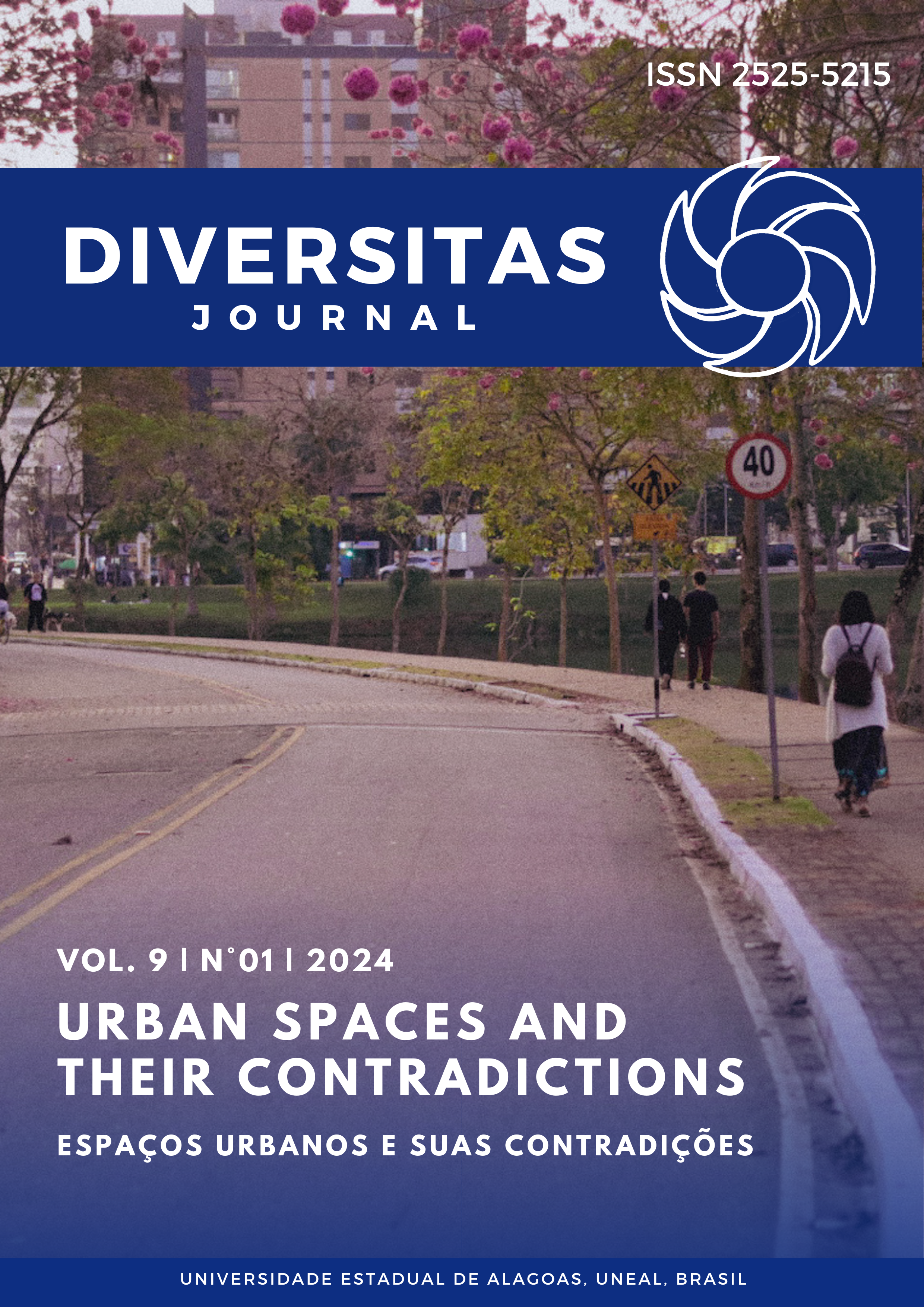The Lived Experiences of Single Mothers After Childbirth
Postpartum Depression (PPD) Stories
DOI:
https://doi.org/10.48017/dj.v9i1.2926Keywords:
Postpartum Depression, Single Mothers, Lived Experiences, Symptoms Of PPDAbstract
This qualitative study used Interpretative Phenomenological Analysis to analyze single mothers' postpartum depression experiences. The study highlighted the problems participants faced as students and single mothers. Satellite campus students participated in the study. The researcherused purposive and snowball sampling to identify 15 young single mothers with one to three children. They weren't necessarily diagnosed or treated for PPD. Single mothers experience different postpartum depression symptoms. Insecurity, tearfulness, irritability, physical symptoms, self-blame, self-harm, unreasonableness, giving up, isolation, and suicidal ideations are symptoms experienced during postpartum depression. According to their stories, PPD symptoms could be a result of the abrupt changes in their life as new mothers. Emotion-focused coping, problem-focused coping, and religious coping were most commonly used by single mothers. Future research should investigate these coping methods. This study contributes a theoretical understanding of the postpartum depression experiences and coping mechanisms of single mothers.
Metrics
References
Beautrais, A. L. (n.d). Suicides and serious suicide attempts: Two populations or one? Psychological Medicine. 2001; 31:837 –45
Defensor-Santiago M. (2007) Postpartum depression research act of 2007. SenateBill No. 2655. 13th Congress.
Dervic K., Grunebaum M.F., Burke A.K., Mann J.J., Oquendo M.A. 2006. Protective factors against suicidal behavior in depressed adults reporting childhood abuse. Journal of Nervous and Mental Disease. 194(12): 971–4.
Doucet, S., & Letourneau, N. (2009). Coping and suicidal ideations in women with symptoms of postpartum depression. Clinical medicine. Reproductive health,3, CMRH.S3801. https://doi.org/10.4137/cmrh.s3801
Dorothy K. Y. Sit, Katherine L. Wisner. (2009). "Identification Of Postpartum Depression." Clinical Obstetrics And Gynecology52.3, 456-468
Endler N.S., Parker J.D.A. (1990) Multidimensional assessment of coping: A critical evaluation.Journal of Personality and Social Psychology. 58: 844–54.
Fitzpatrick KK, Witte TK, Schmidt NB. (2005) Randomized controlled trial of a brief problem-orientation intervention for suicidal ideation. Behavior Therapy.36(4):323–33.
Honey KL, Morgan M, Bennett P. (2003) A stress-coping transactional model of low mood following childbirth. Journal of Reproductive Infant Psychology.21(2):129–43.
Hovey J.D. (1999) Religion and suicidal ideation in a sample of Latin American immigrants.Psychological Reports.85(1): 171–7.
Jessly-Daniel, A. Jothi Priya, R. Gayatri Devi. (2021) "Knowledge and Awareness about Postpartum Distress among the Students of Saveetha Dental College." Journal of Pharmaceutical Research International186-195
Jung-Eun, K., Lee, J., & Lee , S. (2020, June 27). Single Mothers’ Experiences with Pregnancy and Child Rearing in Korea: Discrepancy between Social Services/Policies and Single Mothers’ Needs. Retrieved from Environmental Research and Public Health:https://www.ncbi.nlm.nih.gov/pmc/articles/PMC5981994/
Labrague,L.J., McEnroe‐Petitte,D., Tsaras,K., Yboa,B.C., Rosales,R.A., Tizon,M.M., & D'souza,M.S. (2020). Predictors of postpartum depression and the utilization of postpartum depression services in rural areas in the Philippines.Perspectives in Psychiatric Care,56(2), 308-315.https://doi.org/10.1111/ppc.12428
Lazarus R.S., Folkman S. (1984.)Stress, appraisal, and coping.New York: Springer. Lindsay, T. N., & Gillum, N. L. (2018). Exploring single-mother college students’ perceptions of their college-related experiences and of campus services. The Journal of Continuing Higher Education, 66(3), 188-199. https://doi.org/10.1080/07377363.2018.1537657
Meçe. D. (2012) "Post Partum Depression and Social Support. An Exploration of Experiences of New Mothers with Postpartum Depression in Tirana." Mediterranean Journal of Social SciencesMiller LJ. (2002) Postpartum Depression. Journal of the American MedicalAssociation. 287(6):762-765.
Miyaoka, Y. (2001).Postpartum Depression.Clinical Medicine: Depression. Https://Www.Med.Or.Jp/English/Pdf/2001_08/354_358.Pdf
National Institute for Health and Clinical Excellence (2004) Self-harm: The short-term physical and psychological management and secondary prevention of self-harm in primary and secondary care. NICE Clinical Guideline16. NICE, London
Philippines Daily Inquirer. (2015). In the Know: Postpartum depression.https://newsinfo.inquirer.net/715650/in-the-know-postpartum-depression."Postpartum Depression." Journal of midwifery & women's health58.6 (2013) 719-720
Santiago,M.C., & Habana,M.A. (2020). Determination of the prevalence of postpartum depression and risk factors among postpartum patients at a tertiary government urban hospital using the Edinburgh postnatal depression Scale-Filipino translation (EPDS-F): A cross-sectional study.https://doi.org/10.21203/rs.3.rs-34244/v1
Terreri C.J., Glenwick D.S.Relationship of Religious Coping and General Coping to Adolescent Adjustment.Paper Presented at American Psychological Association Annual Convention; Washington, DC, USA: 2011.
Thomas, A. A., (2020). Department Of Pharmacy Practice. Nazareth College Of Pharmacy, Kerala, India. "Postpartum Depression." Indian Research Journal Of Pharmacy And Science2359-2372
Thurgood S, Avery D, William L. Postpartum depression. American Journalof Clinical Medicine. 2009; 6(2).
Walker RL, Bishop S. Examining a model of the relation between religios-ity and suicidal ideation in a sample of African American and White collexwge students. Suicide and Life-Threatening Behavior. 2005;35(6):630–9.
Wu,W.C., Chen,S.X., & Ng,J.C. (2020). Does believing in fate facilitate active or avoidant coping? The effects of fate control on coping strategies and mental well-being.International Journal of Environmental Research and PublicHealth,17(17), 6383.https://doi.org/10.3390/ijerph17176383
Downloads
Published
How to Cite
Issue
Section
License
Copyright (c) 2024 John Paul Reloj

This work is licensed under a Creative Commons Attribution 4.0 International License.
The Diversitas Journal expresses that the articles are the sole responsibility of the Authors, who are familiar with Brazilian and international legislation.
Articles are peer-reviewed and care should be taken to warn of the possible incidence of plagiarism. However, plagiarism is an indisputable action by the authors.
The violation of copyright is a crime, provided for in article 184 of the Brazilian Penal Code: “Art. 184 Violating copyright and related rights: Penalty - detention, from 3 (three) months to 1 (one) year, or fine. § 1 If the violation consists of total or partial reproduction, for the purpose of direct or indirect profit, by any means or process, of intellectual work, interpretation, performance or phonogram, without the express authorization of the author, the performer, the producer , as the case may be, or whoever represents them: Penalty - imprisonment, from 2 (two) to 4 (four) years, and a fine. ”


















